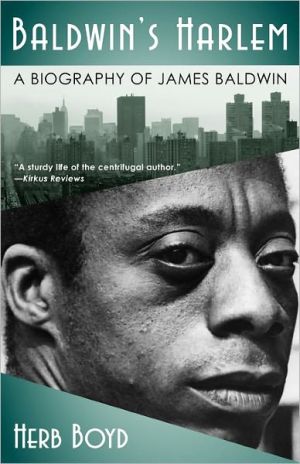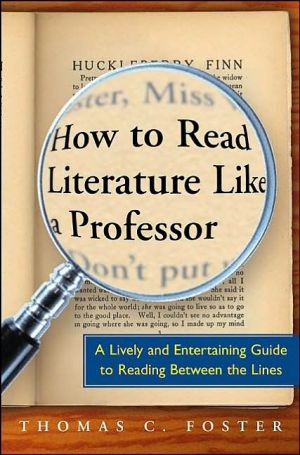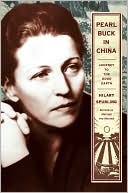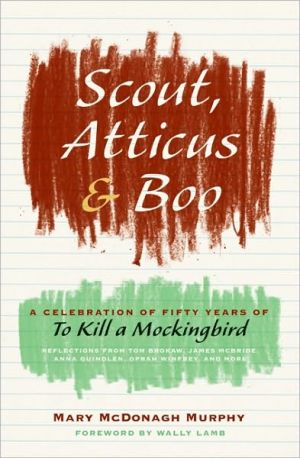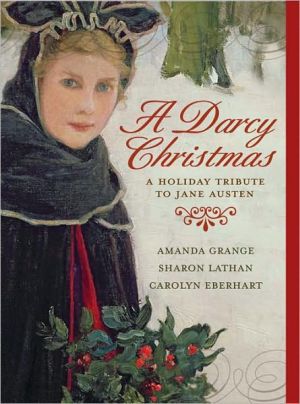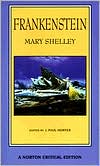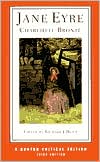Baldwin's Harlem: A Biography of James Baldwin
Baldwin's Harlem is an intimate\ portrait of the life and genius of one\ of our most brilliant literary minds:\ James Baldwin.\ Perhaps no other writer is as synonymous with Harlem as James Baldwin (1924-1987). The events there that shaped his youth greatly influenced Baldwin's work, much of which focused on his experiences as a black man in white America. Go Tell It on the Mountain, The Fire Next Time, Notes of a Native Son, and Giovanni's Room are just a few of his classic fiction and...
Search in google:
Baldwin's Harlem is an intimateportrait of the life and genius of oneof our most brilliant literary minds:James Baldwin.Perhaps no other writer is as synonymous with Harlem as James Baldwin (1924-1987). The events there that shaped his youth greatly influenced Baldwin's work, much of which focused on his experiences as a black man in white America. Go Tell It on the Mountain, The Fire Next Time, Notes of a Native Son, and Giovanni's Room are just a few of his classic fiction and nonfiction books that remain an essential part of the American canon.In Baldwin's Harlem, award-winning journalist Herb Boyd combines impeccable biographical research with astute literary criticism, and reveals to readers Baldwin's association with Harlem on both metaphorical and realistic levels. For example, Boyd describes Baldwin's relationship with Harlem Renaissance poet laureate Countee Cullen, who taught Baldwin French in the ninth grade. Packed with telling anecdotes, Baldwin's Harlem illuminates the writer's diverse views and impressions of the community that would remain a consistent presence in virtually all of his writing.Baldwin's Harlem provides an intelligent and enlightening look at one of America's most important literary enclaves.Publishers WeeklyAlthough James Baldwin (1924-1987) left his native Harlem as a young man and returned only for occasional visits, the New York neighborhood was a recurring theme in his essays and novels, and critics often claimed that the noted African-American writer exploited its squalor. His junior high French teacher was luminary Countee Cullen, who may have inspired Baldwin's later Paris sojourn and his first literary efforts, and Baldwin shared a stormy relationship with another Harlem Renaissance progenitor, poet Langston Hughes, who called Another Countryjuvenile. Baldwin shared a distrust of white liberals with Malcolm X and lent his powerful voice to Harlem's '60s causes, including a rent-strike rally and defense of the Harlem Six put on trial for the brutal murder of a Jewish shopkeeper. Longtime Harlem resident Boyd, managing editor of Black World Today, is authoritative, but in his self-proclaimed role as Baldwin's defender, he gives short shrift to the writer's homosexuality and comes across as rationalizing the anti-Semitism Baldwin was repeatedly accused of in his lifetime. The literary critiques of Baldwin's writings and other details render this volume primarily of interest to scholars of African-American studies (Jan.)Copyright 2007 Reed Business Information
Chapter 1\ Born in Harlem\ I was born in Harlem," James Arthur Baldwin declared at the beginning of Notes of a Native Son, his first published collection of nonfiction. And he described this location in Harlem as "a very wide avenue" in his essay "Notes for a Hypothetical Novel," where the vicinity was known as "The Hollow." "Now it's called Junkie's Hollow," he added. Most of the junkies of Baldwin's day, whether he was referring to dope addicts or the old men who picked up rags and iron, vanished from the scene a generation ago, subsequently replaced by crack addicts and an urban tribe of hunters and gatherers looking for bottles and cans, and anything else the market would bear. The Harlem Baldwin knew has undergone stages of dramatic change, and the most recent transformation — the incessant advance of gentrification — may soon give Harlem the same demographics that were so evident at the beginning of the twentieth century when various European ethnic groups were among the dominant residents. To some degree, Baldwin anticipated these relative social and political changes, and it might have been the perfect kind of diversified Harlem to appeal to his universal outlook, though one assesses Baldwin's mood and attitude at great risk.\ "When I grew up we lived in what was recognized as a neighborhood," Baldwin told anthropologist Margaret Mead during their conversation. "Everybody vaguely knew everybody else. We knew the man who ran the drugstore, the man who ran the butcher shop. We may not have liked all these people, but there they were. Later on, when they started tearing down the slums, as they said, and building these hideous barracks, the neighborhood disappeared. There was no longer communication between the people."\ To be sure, whether stated proudly or with disdain, Harlem would be a recurring theme in all of Baldwin's works. In a later chapter, we will see that his native community took on a variety of configurations, sometimes a fully developed character elbowing into conversations, and at other times a shadowy presence, hardly noticeable as the action moves in and around its perimeters of hope and despair. Sometimes it was merely a matter of whether the scenario was real or imagined. Though Baldwin left Harlem when he was nineteen — never to live there again and returning only for occasional visits — he had "absorbed the full impact of the community," said his sister Gloria Karefa-Smart. "He often came back because we were there. But by the time he was a teenager, he had gathered a wealth of experience, much of which can be found in his fiction and nonfiction."\ James Baldwin was born on August 2, 1924, in Harlem Hospital. The hospital, which had been founded in 1887 in a brownstone on 120th Street and the East River, was greatly expanded once it was relocated in 1911 to Lenox Avenue between 135th and 137th Streets, about four blocks from the first of several Baldwin residences in Harlem. In 1920, perhaps capitulating to community pressure to employ black doctors, the hospital hired Dr. Louis T. Wright. Dr. Wright arrived six years before Dr. May Chinn was hired as the first African American female intern at the hospital. It was a hot and humid Saturday when Baldwin came screaming into the world, and if he had come a day earlier his wail might have joined the cacophony of trumpets, trombones, and thumping drums from a massive parade of Garveyites that had filed past the hospital on their way to nearby Liberty Hall, next door to Abyssinian Baptist Church on 138th Street, for their annual convention. There was probably enough noise to induce labor. By this time, the flamboyant Marcus Garvey had already been convicted of using the mail to defraud patrons who sought to purchase stock in the financially troubled Black Star Line. By 1925, he would begin serving a sentence that was ended in 1927 when President Calvin Coolidge pardoned him and then had him deported.\ "Eight modest, unassuming brass bands blared away down Lenox Avenue," recalled author Zora Neale Hurston. "A few thousand pennants strung across the street overhead...a few floats, a dozen or so titled officials and he [Marcus Garvey] was ready for his annual parade." The Universal Negro Improvement Association's monthlong fourth annual International Convention of Negro Peoples of the World was well under way by the time baby Baldwin began to gaze about him, sizing up his surroundings with his alert, all-seeing eyes, and at the same time seeking comfort ever deeper into his mother's embrace. "A black boy born in New York's Harlem in 1924," Baldwin wrote, "was born of southerners who had but lately been driven from land, and therefore was born into a southern community." His mother, Emma Berdis Jones, was twenty-two years old and unmarried. She had arrived in New York City from Deal Island, Maryland, near the mouth of Chesapeake Bay, along with that multitude of migrants, "blues people" from the South who were fleeing Jim Crow, the Klan, and a horde of other social and political demons that made life dangerous and unbearable for many black Americans.\ Baldwin had no idea who his birth father was, and thus he wrote hardly anything about him. About Berdis, as she was called, there are only a few places in which she is discussed with more than passing remarks. What he did recall was that his mother, like him and his siblings, lived in dread and fear of David Baldwin, whom she married three years later. "It did not take me long, nor did the children, as they came tumbling into this world, take long to discover that our mother paid an immense price for standing between us and our father," James wrote. Like an usher, the eldest child stood by, seemingly with a counter, noting the arrival of his brothers and sisters: "George in January [1928], Barbara, in August [1929], Wilmer, in October [1930], David, in December [1931], Gloria [1933], Ruth [1935], Elizabeth [1937], and (when we thought it was over!) Paula Maria [1943], named by me, born on the day our father died, all in the summertime." In those days, Baldwin lamented, "My mother was given to the exasperating and mysterious habit of having babies. As they were born, I took them over with one hand and held a book with the other." To date, while all of his sisters are alive and well, only George remains of his brothers.\ The one time he described his mother was in a recollection of a childhood day when he came running into the house after seeing an ugly drunk woman on the street, and asked her to hurry to the window to view the hideous creature. "You see? You see? She's uglier than you, Mama! She's uglier than me!" There is no record of his mother's response to this comment, and photos of Berdis indicate that she may not have been a raving beauty, but she was by no means an ugly woman, unless the stylized figure of Eshu of the Yoruba — with its bulging eyes that "embody the power to make things happen" — is unsightly.\ Whatever her visage, it was no better or worse than the thousands who flocked with her beyond the "cotton curtain," looking for better opportunities in the so-called northern promised land. "By 1920 the section of Harlem bordered approximately by 130th Street on the south, 145th Street on the north, and west of Fifth Avenue to Eighth Avenue was predominantly Negro — and inhabited by some 73,000 people. Two-thirds of Manhattan's Negro population lived there in 1920," historian Gilbert Osofsky observed. The Baldwins lived within this narrowly circumscribed enclave, never moving beyond these boundaries. They had been there since the pioneering days of Philip Payton, who founded the Afro-Am Realty Company, and the enterprising Lillian Harris "Pig Foot Mary" Dean, who parlayed a business selling chitterlings, roasted corn, and other products into a real estate empire.\ Like Pig Foot Mary, Baldwin and his brothers often demonstrated entrepreneurial zeal. "People were doing all kinds of things to make a living, shining shoes, selling papers," George Baldwin recalled. "Me, Lover [Wilmer] and some of our friends would sell firewood to our neighbors. We would get the wood from over on the east side from a lot of abandoned houses. We would carry our axes and bushel baskets and follow behind the WPA [Works Project or Progress Administration] workers, picking up what they had left behind after they finished a job. The heavy thick wood we got would burn longer, so this would be sold to the coal flats."\ "Harlem was not an all-black community during the time I was growing up," Baldwin wrote. Among the smorgasbord of ethnicities scattered around Harlem were Italians, Irish, Finns, Poles, Jews, West Indians and other 'exotics.' We could all be found eating as much as we could hold in Father Divine's restaurant for fifteen cents," he recalled, referring to the religious cult leader who provided inexpensive meals for the homeless and destitute during the Depression.\ Given the diversity of ethnic groups competing for jobs, housing, and self-respect, the turbulence and conflict among them were inevitable. But for all the talk about racial tension, the main source of discord was between African Americans and the influx of immigrants from the Caribbean. Despite their racial commonality, their differences in culture, religion, and lifestyle often left them at odds, and those toxic moments were not relieved by ridicule, insults, and doggerel hurled at the new arrivals by native blacks and others. "When a monkey chaser dies, you don't need an undertaker, throw him in the Harlem River, and he'll float back to Jamaica" was a common verse, mocking some of the newcomers and often leading to violence. Rudolph Fisher, novelist and short story writer of the Harlem Renaissance, captured some of the tension that resulted from confrontations between indigenous blacks and the influx of people from the islands. His haughty West Indian protagonist, Cyril Sebastian Best, not only looked down his nose at Black Americans but his own kinsmen. "There were British West Indians in Harlem who would have told Cyril Sebastian Best flatly to his face that they despised him — that he would not have dared even address them in the islands; who frequently reproved their American friends for judging all West Indians by the Cyril Sebastian Best standard. There were others who, simply because he was a British West Indian, gathered him to their bosoms in that regardless warmth with which the outsider ever welcomes his like." Thus the dynamic of race relations was not exclusively limited to insults and fights between the islanders and African Americans. The newcomers had their own class, caste color, and style distinctions that often ignited dissension. These factors, along with white flight, created a new demographic in Harlem; the mixture also gave rise to the emergence of the ghetto that would later figure prominently in Baldwin's early essays.\ Harlem, which had grown exponentially since the turn of the century, may have been a keg of human dynamite, but one wouldn't have known it from the bustling nightlife. When the Cotton Club opened officially in 1918, it sparked an explosion of other clubs, including Connie's Inn, at 131st and Seventh Avenue, Smalls' Paradise, at 135th and Seventh Avenue, and Leroy's, at 135th Street and Fifth Avenue. The clubs were one way to hold on to the dwindling white residents, particularly when they catered to white patrons only. There were reputed to be more than 125 nightclubs in Harlem by the mid-1920s. However, the jovial nightlife with "slumming" whites perhaps obscured the erosion of the community's infrastructure.\ If the storied "Harlem Renaissance" was in full bloom following the success of the Broadway production of Shuffle Along in 1921, it was a cultural phenomenon that bypassed most Harlemites struggling to make ends meet. In his writings Baldwin seldom mentioned this glorious era that has gained its own special niche in American history. In "Notes for a Hypothetical Novel," he wrote with a rather dismissive tone that "as I was coming into the world there was something going on called the Negro Renaissance; and the most distinguished survivor of that time is Mr. Langston Hughes. This Negro Renaissance is an elegant term which means that white people had then discovered that Negroes could act and write as well as sing and dance and this Renaissance was not destined to last very long." On several occasions he cited the works of Steinbeck, Dos Passos, Hemingway, Cain, Faulkner, and other white authors of the twenties and thirties; but such Harlem literary stalwarts as Rudolph Fisher, Claude McKay, Zora Neale Hurston, Jean Toomer, Wallace Thurman, W.E.B. Du Bois, Nella Larsen, Dorothy West, Jessie Fauset, Walter White, Carl Van Vechten (one of the few whites able to gain entry in the salons without being charged with "slumming"), and other prominent writers of the period, if mentioned at all, are given short shrift. Van Vechten is given a special nod in the foreword Baldwin wrote for Bobby Seale in 1977, where Baldwin points out that Nigger Heaven, Van Vechten's novel, was published around the time of his birth. However, rat- and roach-infested Harlem was hardly a heaven, he recalled. To his credit, though, Baldwin does single out Louis Armstrong, Duke Ellington, and Bessie Smith, among other musicians who are generally ignored in the rapture about the renaissance. Of course, there is nothing startling about this inclusion from Baldwin, for, as he wrote in "Many Thousands Gone," "It is only in his music, which Americans are able to admire because a protective sentimentality limits their understanding of it, that the Negro in America has been able to tell his story." Apparently none of Harlem's writers who preceded him warranted any discussion. Only Countee Cullen and Langston Hughes appear in his essays or reviews, and more will be said about those relationships later.\ Certainly one can argue the relative literary merits of any of the above authors and their works, but many of these stories have offered Baldwin and others substantial insight on the Harlem community's morals, values, and ethics, and especially the pervasive racial tension. There is much to be learned about the contest between native blacks of Harlem and their kin from the Caribbean in Fisher's short stories, most notably "Ringtail," and in his novel The City of Refuge. From Nella Larsen's Passing, Baldwin could have gathered insight into "double consciousness" and the conflict of cultures that resonated at Harlem's social and political core. The works of W.E.B. Du Bois gave the concept added depth and dimension. From There Is Confusion, Jessie Fauset's novel (which, like Walter White's Fire in the Flint, was published the year of Baldwin's birth), Baldwin could have gleaned a few of the racial and sexual complexities that governed the lives of Harlem's black women, many of them his mother's contemporaries. And in Claude McKay's Home to Harlem there is an unrelenting celebration of the lower class, which stands in stark contrast to Baldwin's nonfiction summaries, even as McKay somewhat anticipates Baldwin's fictional portrayals.\ There is no way to gauge the impact of the Garvey movement or the Harlem Renaissance on Baldwin, or even the fulminations of the nascent labor activism of A. Philip Randolph and Chandler Own that was disseminated through the pages of the Messenger, or the revolutionary tendencies represented by the African Blood Brotherhood that were then vibrating through Harlem. There were certainly remnants of all these things by the time Baldwin was old enough to venture from home and begin his encounters with the community and the world, but it's no easy task to define how these experiences were transmuted through his art — or if they were at all. This is a challenge Baldwin's fiction and nonfiction will show us.\ "I hit the streets when I was seven," Baldwin wrote in the opening lines of "Dark Days." "It was the middle of the Depression and I learned how to sing out of hard experience." In 1931, as Baldwin notes, Harlem was not exempt from the throes of the Great Depression, and he must have witnessed, on his way to P.S. 24, located on 128th Street between Fifth Avenue and Madison, the long bread lines snaking through the community. For most black residents of Harlem, save for the well-heeled living on Sugar Hill and Strivers' Row, the Depression only added to the stark, miserable conditions. During several interviews Baldwin remembered these terrible times when he was perpetually hungry, and subsisting on a diet of "corned beef and prunes." "My mother fried corned beef, she boiled, she baked it, she put potatoes in it, she put rice in it, she disguised it in corn bread, she boiled it in soup, she wrapped it in cloth, she beat it with a hammer, she banged it against the wall, she threw it onto the ceiling," Baldwin wrote in "Here Be Dragons."\ For all the pains of poverty and starvation, some of Harlem's poor found solace in the fact that their predicament was better than the fate facing the Scottsboro Boys, nine young blacks who had been charged with assault and rape after a melee on a train in northern Alabama that was bound for Memphis, Tennessee. As in many black communities across the nation, large rallies were held in Harlem in the boys' defense. These were mainly organized by the NAACP and the Communist Party, which by this time had attained a respectable reputation in Harlem. Not too far from Baldwin's home on Park Avenue, on April 25, 1931, "Five thousand Harlemites jammed Lenox Avenue near 140th Street to hear Communist speakers, and watched a group of 500 communists, predominantly white, march onto Lenox Avenue without a permit, precipitating a violent clash with police."\ The outcry and the protests of the injustice over the Scottsboro Boys were momentary compared to the broad political unrest voiced by speakers on the corners of many of Harlem's streets. Rarely in Baldwin's writings is there mention of the street orators who assailed racism and white supremacy or advocated socialism and Black Nationalism. But given their visibility and activism, it was hard to ignore them. There were bitter denunciations from such activists as Cyril Briggs, W. A. Domingo, Grace Campbell, Claudia Jones, Harry Haywood, Hubert Harrison, and the redoubtable Richard B. Moore, who had also worked tirelessly in the campaign to free the Scottsboro Boys. These voices also wailed against the dire economic circumstances so graphically described by Anna Arnold Hedgeman, then secretary of the West 137th Street Branch of the YWCA and often a volunteer in soup kitchens: "A large mass of Negroes was faced with the reality of starvation and they turned sadly to public relief. A few chanted optimistically, 'Jesus will lead me, and Welfare will feed me.' Meanwhile men, women and children searched in garbage cans for food, foraging with dogs and cats." Too many denizens of Harlem, she said, were "packed in damp, rat-ridden dungeons, [and] they existed in squalor not too different from that of the Arkansas sharecroppers." The Depression had come, and most Harlemites didn't know the difference.\ Baldwin later confessed that he knew nothing of the political beliefs of his teachers at P.S. 24, but he also stated that "some of the white teachers were very definitely on the Left. They opposed Franco's Spain and Mussolini's Italy and Hitler's Third Reich. For these extreme opinions, several were placed on blacklists and drummed out of the academic community — to the everlasting shame of that community." This is clearly Baldwin's reflection on an earlier stage of his life, and, curiously, the time frame does not exactly fit his first years at elementary school, though it certainly falls within the five years that witnessed the eruption and spread of fascism. Of the black teachers at the school — and again we must presume he's talking about P.S. 24 — they were "laconic about politics but single-minded about the future of black students." Many of them, he noted, "were survivors of the Harlem Renaissance and wanted us black students to know that we could do, become anything."\ Among this caring coterie of teachers was Gertrude E. Ayer, the school's principal, and the first black principal in the history of New York City schools. (Baldwin mistakenly remembered her as Ayers; her surname was Ayer.) Baldwin recalled her brilliance and her achievements, but said nothing more about her. To be sure, Gertrude Elise Ayer (née Johnson) was a pioneering educator, but she was also a proficient writer and feminist. Born October 13, 1884, in New York City, Ayer came from a very successful family. Her father, Peter Augustus Johnson, was the third black American admitted to practice medicine in New York City. Her mother was English and an expert needlewoman. Ayer married Cornelius W. McDougald in 1911, after completing studies at Hunter College, Columbia University, City College, and New York University. Her husband was the initial counsel for Marcus Garvey during his trial for mail fraud in 1923 (though, for the most part, Garvey was his own lawyer). Later, he was appointed United States assistant district attorney. While her husband was defending Garvey, Ayer, a sprightly, very attractive light-skinned woman, was in the nation's capital delivering a speech on the necessity of education and vocation for African Americans. "Education is on the increase — and the Negro must get his just share," she declared. "Industry is becoming more humanized — the Negro must be regarded in the new light."\ In 1924, Ayer passed a competitive exam and was appointed an assistant principal at P.S. 89 in Manhattan. One of the noteworthy students under her tutelage during this phase was Olivia Pearl Stokes (1916-2002), later to become the first African American woman to receive a doctorate in religious education. Without a college degree, Ayer herself became the first black woman to hold a principalship in New York City public schools, in February 1935, by which time Baldwin was eleven years old. Ten years later, in 1945, she was appointed the principal at P.S. 119, where she would remain until her retirement in 1954. Along with her educational duties, Ayer was a member of a number of social and political organizations, including Alpha Kappa Alpha Sorority. She was eighty when she died on July 10, 1971.\ Baldwin was just one of many admirers and beneficiaries of Ayer's indomitable spirit. And her young charges must sometimes have felt her firm guidance and been inspired by her resolute stance, especially her encouraging words to the women and the black girls of Harlem. "In New York City," she wrote, "nearly three hundred Negro women share the good conditions in the teaching profession. They measure up to the high pedagogical requirements of the city and state law and are increasingly, leaders in the community." "I loved and feared the lady — for she really was a lady, and a great one — with that trembling passion only twelve year olds can feel," Baldwin told David Leeming. And years later she still remembered Baldwin, as a "very slim, small boy with that haunted look."\ Some of the teachers under Ayer's stewardship may not have viewed Baldwin as haunted, but they did immediately recognize the intelligence of their aspiring protégé. Within months of entering P.S. 24, Baldwin earned the attention of Orilla Miller, whom Baldwin would dub "Bill." She had arrived in New York after finishing Antioch College in 1933. A year later, as part of the WPA, she conducted theater educational programs and P.S. 24 was one of the schools on her schedule. Bill was a beautiful woman, Baldwin recalled, and because of her "I never really managed to hate white people."\ Bill Miller took the impressionable Baldwin under her liberal wing, and he wrote fondly of her and at length in The Devil Finds Work. "She didn't baffle me," he said, the way some white landlords and storekeepers had, "and she never frightened me and never lied to me. I never felt her pity, either, in spite of the fact that she sometimes brought us old clothes (because she worried about our winters) and cod-liver oil, especially for me, because I seemed destined, then, to be carried away by whooping cough." She didn't call him a nigger; in fact she herself "was treated like a nigger, especially by the cops." It was Miller who introduced him to the world of film, where he first saw the "frog eyes" of Bette Davis, which somewhat relieved the stigma and the stinging insults he had experienced daily from friends and foes who saw him as "strange." If Davis could make it in Hollywood, then maybe there was hope for him, too; maybe his strangeness would not be a handicap to success.\ Miller also took Baldwin to plays and even helped to stage and direct the first play he had written. Baldwin retained fervent memories of the time Miller and her sister took him to the Lafayette Theater on Seventh Avenue between 131st and 132nd Streets, near Connie's Inn and the legendary Tree of Hope, which performers often touched for good luck, to see an all-black voodoo version of Macbeth produced by Orson Welles and starring Canada Lee. Opening night was April 14, 1936, and the turnout was massive, with theatergoers clogging the streets and sidewalks for blocks in every direction. Along with the prospect of making money, and entertaining a community still recovering from the ravages of a race riot that had left shards of property damage, there was a hope that the production would help revive black theater in Harlem, which theater had suffered serious setbacks since the late twenties.\ For the most part, critics, particularly those opposed to WPA projects, weren't sure what to make of the production. Percy Hammond of the New York Herald Tribune summed it up as an "exhibition of deluxe boondoggling...an ostentatious spectacle," and expressed exasperation at the waste of taxpayers' money. As Wendy Smith notes, "When Hammond died suddenly a few days later, a rumor circulated among the [Federal Theatre Project] Negro Unit staff that he was the victim of malevolent spells cast by the enraged voodoo drummers." It was reminiscent of the judge dropping dead after sentencing Father Divine to prison.\ As for Baldwin's assessment of the play, he later wrote that Shakespeare had only a minimal effect on him back then, though according to Miller he was clearly mesmerized. The Bard's intimidation would occur further down the road — but Miller had achieved her purpose of having him see a play with an all-black cast. "The play ran for ten weeks at the Lafayette with sixty-four sold out shows," wrote Mona Z. Smith. "On 'Relief Nights,' seats sold for as little as five cents, a price that encouraged many to see a play for the first time in their lives." In his book The Crisis of the Negro Intellectual, Harold Cruse pointed out that Baldwin had "garbled Harlem's theatrical history" during an interview with the Herald Tribune in 1964 by confusing the Lafayette Players (a Negro repertory company organized well before World War I by Anita Bush, with Clarence Muse and Dooley Wilson among its illustrious alumni) with the Lafayette Theater. But Baldwin may have been right since Bush moved her group from the Lincoln Theater to the Lafayette, which brought about the change of name. Cruse went on to excoriate Baldwin on several other counts that had no pertinence to the issue at hand. It would be the first of many bitter encounters between them that we will examine extensively in a later chapter.\ Eventually the Lafayette — like so many of the theaters that depended on stage productions — switched to showing movies, and by 1950, five years before Baldwin completed The Amen Corner, it was converted to a church. It is currently the Williams Christian Methodist Church. A New Lafayette Theater would emerge for a brief spell in 1968, under the aegis of playwright Ed Bullins and director Robert Macbeth. Gordon Polatnick, owner of the Big Apple Jazz Club and Café, directly across the street from that historic site, dreams of restoring that vista. "And I would put the Tree of Hope right back where it used to be," he said.\ Baldwin was ten years old when a riot ripped Harlem apart in the spring of 1935. If he knew the details of the incident, they were not revealed in any of his works, though he must have heard about it in the streets, at home, and through the sermons of the Reverend Adam Clayton Powell, Jr. at Abyssinian Baptist Church, where Baldwin and his family were members. Months before the riot, the Harlem streets were abuzz with the protests and demonstrations led by Powell against department stores where blacks were not employed. His retinue was armed with placards that proclaimed "Don't Buy Where You Can't Work!" Powell also rushed to the defense of families who had been evicted from their homes, taking his cue from the Communist Party, which had earlier begun a similar action. "I would walk the streets looking for an evicted family," Powell explained in his autobiography, "and when I found one, I immediately sent a protest committee to the owner of the building, saying 'Put that family back in their home or we will have every family in the building refuse to pay their rent.'" It appears that at no time were the Baldwins threatened with eviction, but without the extra income brought home by Baldwin and his brother George from "shining shoes and selling shopping bags," their mother's meager wages from cleaning "white ladies' apartments" would not have been enough to hold off the avaricious landlords. As the breadwinner, David Baldwin was a common laborer, menially employed at a distant job on Long Island where he worked at a soda bottling plant; he also earned a few dollars from the collection box as a storefront preacher with a tiny congregation. Baldwin said that when he was growing up his stepfather never made more than $27.50 a week.\ "My family lived on Park Avenue, just above the uptown railroad tracks," Baldwin observed. "The poverty of my childhood differed from the poverty of today [this was written in 1980] in that the TV set was not sitting in front of our faces, forcing us to make unbearable comparisons between the room we were sitting in and the rooms we were watching, neither were we endlessly being told what to wear and drink and buy. We knew that we were poor, but then, everybody around us was poor." Poverty and police brutality were the twin demons that menaced Harlem when Lino Rivera, a Puerto Rican youth of sixteen, was arrested and accused of shoplifting at S. H. Kress on 125th Street and Lenox Avenue. His arrest triggered rumors that he had been beaten to death in the store's basement. As historian Herbert Shapiro writes, "The incident at the store itself symbolized two elements of the explosive situation, the white-owned retail establishment that was located in the black community and yet refused to hire black clerks, and the police who often enough had given evidence that they were quite capable of the excess use of force." This was not a clash between races, but an attack upon property, though James Thompson, nineteen, was killed after being shot in the chest by a detective while looting a store. More than two hundred stores had their windows broken and were looted, according to police reports. Mayor Fiorello LaGuardia called the disturbance an "unfortunate occurrence" and said it was "instigated and artificially stimulated by a few irresponsible individuals."\ The mayor quickly named a committee, including A. Philip Randolph of the Sleeping Car Porters; Hubert Delaney, a prominent Harlemite and the city's tax commissioner; and the poet Countee Cullen, who was also a teacher at Frederick Douglass Junior High School, where Baldwin had recently enrolled. Mayor LaGuardia also placed some of the blame on the Communist Party, which he accused of inciting the riot with its fliers full of false statements about police brutality. In a counterstatement, James Ford, a ranking African American of the Communist Party, said the cause was the starvation conditions and the suffering of Harlem Negroes. Others in the community believed that widespread price-gouging by heartless landlords who discriminated against blacks was a key factor. One activist in the tenants association protesting the hikes said her renting agent had refused to accept her $22 rent money, demanding that she pay the entire month's rent of $48, plus $3 for the cost of serving eviction papers. A year and a half after the incident, the mayor's commission released its report, which was published in the Amsterdam News in the summer of 1936, not long after Voodoo Macbeth had completed its run at the Lafayette. Among the recommendations were the elimination of discrimination against blacks in employment, improvements of relief and health care services at Harlem Hospital, the construction of new schools, and the expansion of recreational facilities. There was also a demand for better housing. "The tenements people were once so proud of are now rather dangerous firetraps and should be rebuilt," a twelve-year-old Baldwin wrote in a school assignment shortly after the mayor's report was released. "There has been some effort on the part of the Housing Authorities to improve them, but as yet they have only operated in a very small field. Now we, who are interested in Harlem, hope that the future will bring a steady growth and improvement."\ Harlem's economic development may have been sluggish, moving along in fits and starts, but Baldwin was maturing steadily. The concise prose in "Harlem — Then and Now" provides solid evidence of this. Baldwin's math teacher, Harvard graduate Herman W. Porter, also known as Bill, or "Mr. Discipline," assigned the story and insisted on serious research. "Porter took me downtown to the main branch of the public library at Forty-second Street and waited for me while I began my research," Baldwin recounted. "He was very proud of the story I eventually turned in. But I was so terrified that afternoon that I vomited all over his shoes in the subway." Some of Baldwin's nausea and trauma might have been the result of the earlier encounter between his father and Porter. Porter had arrived at the Baldwins' apartment at 2171 Fifth Avenue to escort him to the library. He was simply astounded by the clutter and noise that greeted him there. No less startling was the presence of David Baldwin, who viewed Porter as an intruder. With Baldwin's mother hovering in the background over her brood of children, his father let Porter know in no uncertain terms that he was an unwelcome guest, an invader. Porter told Fern Marja Eckman that he was relieved when they finally departed for the library.\ Porter guided the young Baldwin to the librarian, gave him carfare for the return trip home, and left him to do the research. "I'm sure that was the first time he'd ever seen that library," Porter said, "and yet he turned in a superb job — really, a superb job."\ Completing the quartet of early Baldwin mentors that included Ayer, Miller, and Porter was the Harlem Renaissance immortal Countee Cullen.\ Copyright © 2008 by Herb Boyd
Foreword Peniel E. Joseph ixPreface xv1 Born in Harlem 12 Encountering Countee Cullen 233 Langston Hughes 334 Sanctuary 475 Death in Harlem 556 Malcolm X 657 The Harlem Six 878 The Jewish Question 1039 Harlem, Real and Imagined 12510 Cruse's Crisis 14911 Baraka 169Afterword 179Acknowledgments 185Interviews 189Chronology of Major Events in James Baldwin's Life 205Notes 209Selected Bibliography 231Credits and Permissions 234Index 235
\ Publishers WeeklyAlthough James Baldwin (1924-1987) left his native Harlem as a young man and returned only for occasional visits, the New York neighborhood was a recurring theme in his essays and novels, and critics often claimed that the noted African-American writer exploited its squalor. His junior high French teacher was luminary Countee Cullen, who may have inspired Baldwin's later Paris sojourn and his first literary efforts, and Baldwin shared a stormy relationship with another Harlem Renaissance progenitor, poet Langston Hughes, who called Another Countryjuvenile. Baldwin shared a distrust of white liberals with Malcolm X and lent his powerful voice to Harlem's '60s causes, including a rent-strike rally and defense of the Harlem Six put on trial for the brutal murder of a Jewish shopkeeper. Longtime Harlem resident Boyd, managing editor of Black World Today, is authoritative, but in his self-proclaimed role as Baldwin's defender, he gives short shrift to the writer's homosexuality and comes across as rationalizing the anti-Semitism Baldwin was repeatedly accused of in his lifetime. The literary critiques of Baldwin's writings and other details render this volume primarily of interest to scholars of African-American studies (Jan.)\ Copyright 2007 Reed Business Information\ \ \ \ \ School Library JournalBorn in Harlem in 1924, James Baldwin was raised and educated there at a time when the glories of the Harlem Renaissance were giving way to the dark days of the Great Depression. In his latest effort, prolific writer and journalist Boyd (Harlem Reader) focuses on the powerful role Harlem played in Baldwin's life and work. He traces the influence of Countee Cullen, who taught Baldwin French in junior high school, and of literary models like Richard Wright and Langston Hughes. He explores Baldwin's call to the pulpit, his religious crisis, his coming to terms with his homosexuality, and his responses to the Civil Rights Movement, black nationalism, and the conflicts between Jews and blacks in Harlem. Throughout, he defends Baldwin against his detractors, particularly the self-proclaimed gadfly Harold Cruse. Boyd's interviews with Michael Thelwell (Univ. of Massachusetts) and Quincy Troup round out the volume. Given its narrow scope, this work will probably appeal most to readers already familiar with Baldwin. Those new to the author's life and work may want the broader context provided by David Leeming's James Baldwin: A Biographyor William Weatherby's James Baldwin: Artist on Fire. Recommended for academic and larger public libraries.\ —William Gargan Copyright 2007 Reed Business Information\ \ \ \ Kirkus ReviewsA slender but sturdy life of the centrifugal author at home in New York. Baldwin was many things; consistent is not necessarily one of them. Boyd (Pound for Pound: A Biography of Sugar Ray Robinson, 2005) notes that Baldwin was "committed to black radicalism" and a fellow traveler of Malcolm X, yet not so committed to the cause as to endorse younger activists such as Black Panther leader Eldridge Cleaver, who returned the favor. We meet Cleaver as he and Baldwin were supposedly kissing at a 1967 dinner party in San Francisco, "a graphic contradiction of [Cleaver's] merciless attack on Baldwin's homosexuality, or an indication of his own deep-seated sexual ambivalence." Baldwin advocated racial rapprochement, telling Harlem schoolchildren, "Color doesn't matter. Color is a political reality which certain politicians use. There is no moral value to black or white skin." Yet he excused his vigorous anti-Semitism by saying that nearly all blacks in Harlem, after all, hated Jews: "We hated them because they were terrible landlords, and did not take care of the building." Baldwin, writes Boyd, was a student of Harlem Renaissance poet Countee Cullen and was active in the small literary circle that succeeded the movement. Yet where Cullen was concerned with community-building, Baldwin seems to have thrived on feuds, such as a long-running one with Langston Hughes and, calculated to fuel anti-Semitic sentiments, another fierce one with Norman Mailer. Boyd traces those conflicts to their roots, delivering a refined sort of literary gossip ennobled by substance: We hear, for instance, of Henry Louis Gates's running argument with Baldwin over whether Harriet Beecher Stowe was a worthy writer, ofAmiri Baraka's dismissal of Baldwin for not being a sufficient revolutionary and so forth. Less thorough than James Campbell's Talking at the Gates: A Life of James Baldwin (1991), but still of much interest to students of recent American letters.\ \
